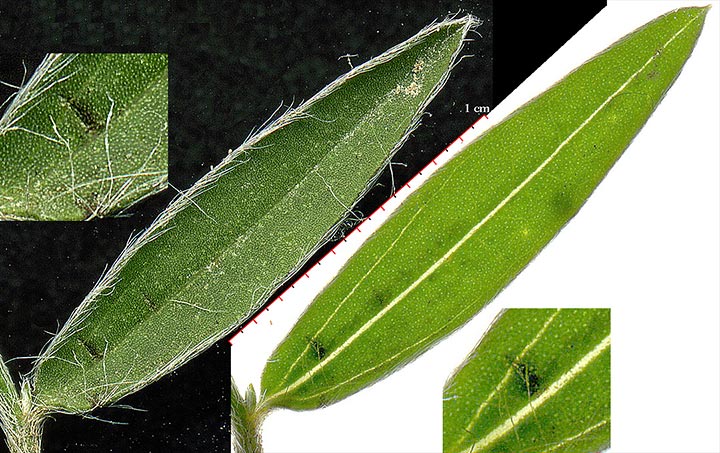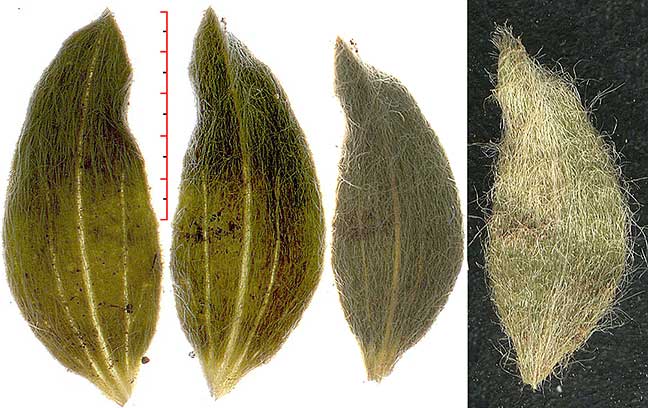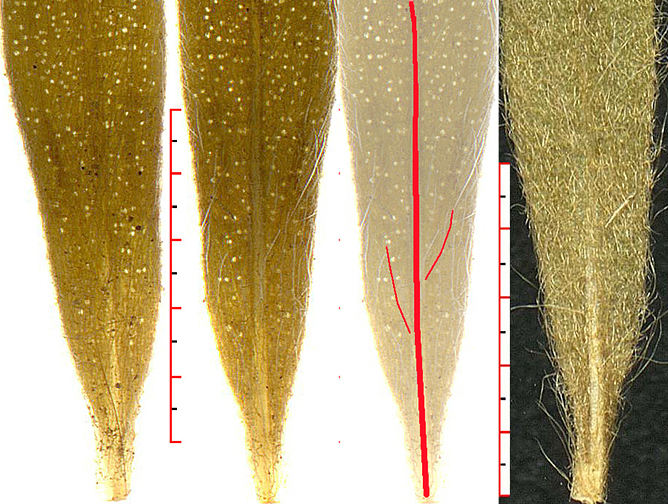
Evolvulus sericeus — Hays Co. A fresh leaf, no preparation, scanned with reflective light (left) and with the transparency utility (right).
[Click to enlarge.]

Evolvulus sericeus — Hays Co. A fresh leaf, no preparation, scanned with reflective light (left) and with the transparency utility (right).
[Click to enlarge.]

Dried pressed leaves from herbarium specimens did not give quite such clear results, but when these were first soaked in hot water for several hours, the venation patters became clearer. This was true with western specimens of E. sericeus with heavy pubescence on both surfaces (often incorrectly assumed to be E. nuttallianus). For example:

The leaves of E. nuttallianus do not give as clear an indication of major venation patterns. The midrib is always strong, but secondary veins are difficult to see when rehydrated.
